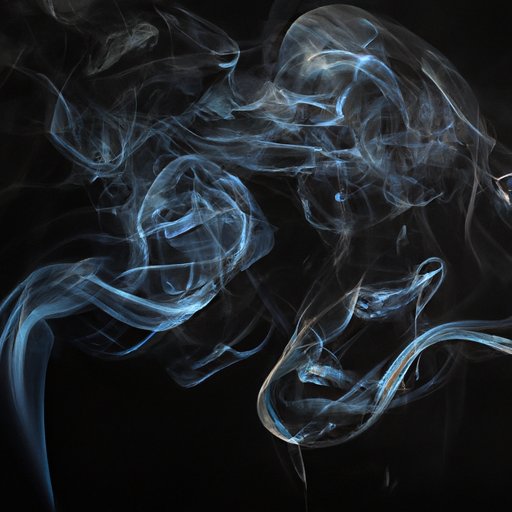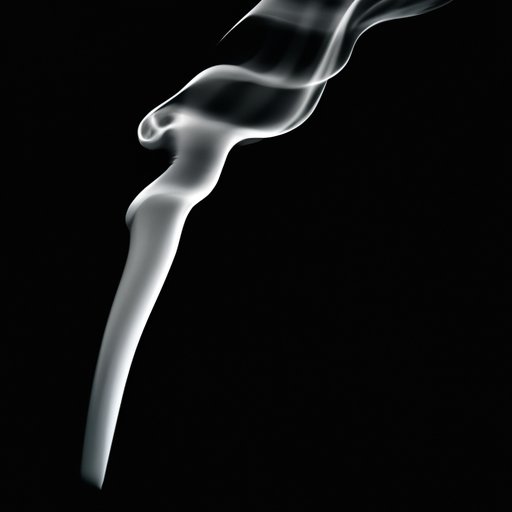
I. Introduction: Addressing the Problem of Drawing Smoke
Drawing smoke presents a unique artistic challenge that requires skill, patience, and careful observation of its organic qualities. Whether you are a beginner or an experienced artist, mastering the art of smoke drawing can be a rewarding and enriching experience. This article will provide practical techniques, tips, and inspiration to help you draw smoke with confidence and creativity.
II. Mastering the Art of Smoke Drawing: Techniques and Tips for Beginners
Drawing smoke involves a basic process of creating layers of shading, highlights, and texture to capture its subtle nuances. However, there are specific techniques that can enhance the realism and depth of your smoke drawings. To begin with, start with a light pencil sketch of the smoke and gradually add layers of shading to create depth and volume. Use shading techniques such as hatching, stippling, or cross-hatching to achieve the desired effects. Additionally, use a blending tool such as a blending stump or tortillon to blend the different layers of shading for a more seamless finish.
Incorporating highlights is also important to create the illusion of light and shadow. Use a kneaded eraser to lift off or lighten areas where light hits the smoke, and add small white highlights for a more realistic effect.
Finally, practice is crucial when learning to draw smoke. Start by observing real-life smoke and practice replicating its qualities in your drawings. Experiment with different techniques and use reference materials such as photographs or videos to refine your skills.
III. The Beauty of Imperfections: Embracing the Organic Nature of Smoke Drawing
Smoke is a unique subject for drawing because its organic, shifting qualities provide an opportunity for artistic expression. Embracing its natural imperfections can enhance its beauty and add a sense of liveliness to your artwork. One way to achieve this is by creating a rough, textured surface by drawing small circles or scribbles on the smoke. Another technique is to use a softer pencil to create more expressive lines and textures.

IV. From the Mundane to the Mystical: Drawing Smoke in a Range of Styles and Contexts
Smoke can be incorporated into a variety of artistic styles and contexts, from photorealistic portraits to abstract compositions. It is often used in still-life drawings, landscapes, or atmospheric scenes to create a sense of depth and atmosphere. However, smoke can also be used to depict mystical or surreal scenes, such as magical spells, visions, or dream sequences. The style and context of the artwork can greatly impact the depiction of smoke, so consider your artistic intentions when incorporating it into your drawings.
V. Playing with Perception: Using Smoke Drawing to Challenge the Eye and the Mind
Smoke can be used to create optical illusions and challenge the viewer’s perception. One technique is to create a three-dimensional effect by drawing the smoke in perspective, revealing the hidden shapes and contours within. Another technique is to use contrasting values or colors to create a sense of movement or vibration within the smoke. These techniques can add a sense of intrigue and mystery to your smoke drawings.
VI. Beyond Smoke: How to Draw Other Elusive Subjects with Confidence
Drawing smoke is just one example of how an elusive subject can be mastered with confidence and creativity. Water, clouds, fire, and other elusive subjects present similar challenges that require observation, skill, and perseverance. When drawing water, observe its reflection, transparency, and movement to create a convincing depiction. When drawing clouds, experiment with different textures and shapes to capture their ethereal quality. Similarly, when drawing fire, use contrasting values and colors to create the illusion of heat and energy. With practice and experimentation, you can expand your repertoire and tackle any subject with confidence.
VII. Conclusion: Emphasizing the Importance of Practice and Confidence
Drawing smoke is a challenging but rewarding experience that requires skill, observation, and creativity. By mastering the techniques and embracing the natural qualities of smoke, you can create realistic, expressive, and intriguing artworks. However, it takes practice, patience, and confidence to hone your skills and develop your artistic style. Remember to experiment, observe, and enjoy the process of drawing smoke, and you will be rewarded with beautiful and meaningful artworks.




